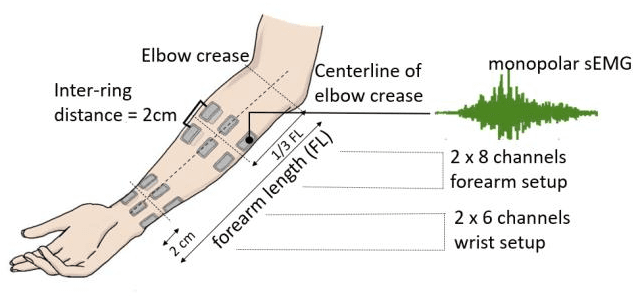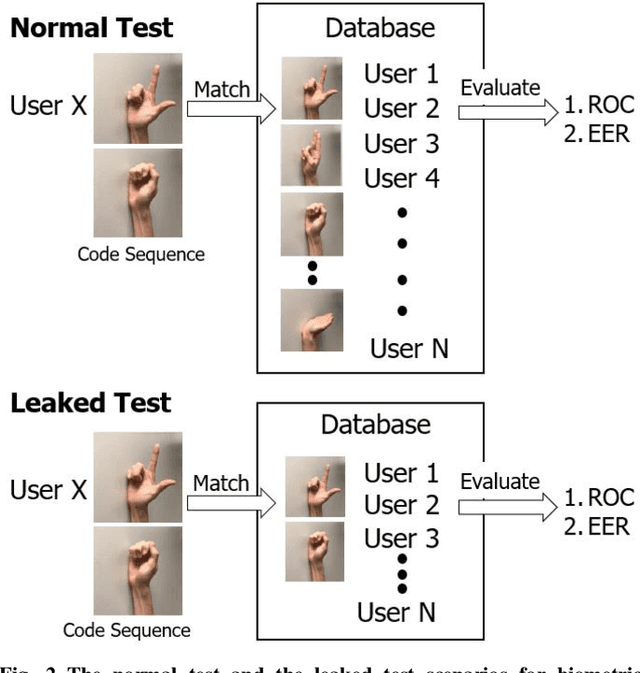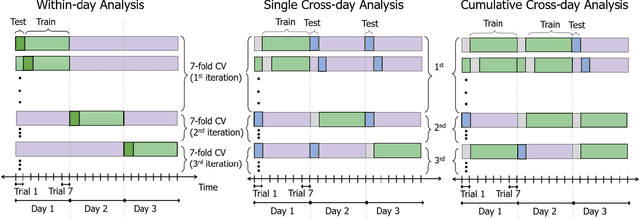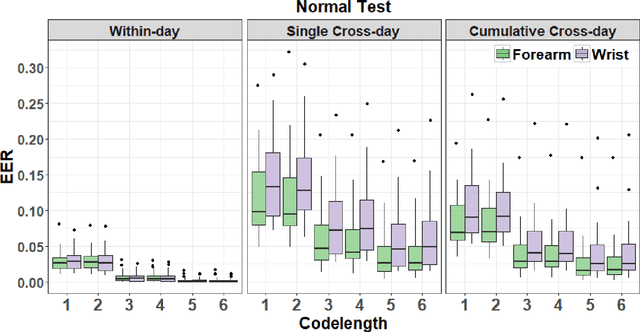Open Access Dataset for Electromyography based Multi-code Biometric Authentication
Paper and Code
Jan 05, 2022



Recently, surface electromyogram (EMG) has been proposed as a novel biometric trait for addressing some key limitations of current biometrics, such as spoofing and liveness. The EMG signals possess a unique characteristic: they are inherently different for individuals (biometrics), and they can be customized to realize multi-length codes or passwords (for example, by performing different gestures). However, current EMG-based biometric research has two critical limitations: 1) a small subject pool, compared to other more established biometric traits, and 2) limited to single-session or single-day data sets. In this study, forearm and wrist EMG data were collected from 43 participants over three different days with long separation while they performed static hand and wrist gestures. The multi-day biometric authentication resulted in a median EER of 0.017 for the forearm setup and 0.025 for the wrist setup, comparable to well-established biometric traits suggesting consistent performance over multiple days. The presented large-sample multi-day data set and findings could facilitate further research on EMG-based biometrics and other gesture recognition-based applications.
 Add to Chrome
Add to Chrome Add to Firefox
Add to Firefox Add to Edge
Add to Edge